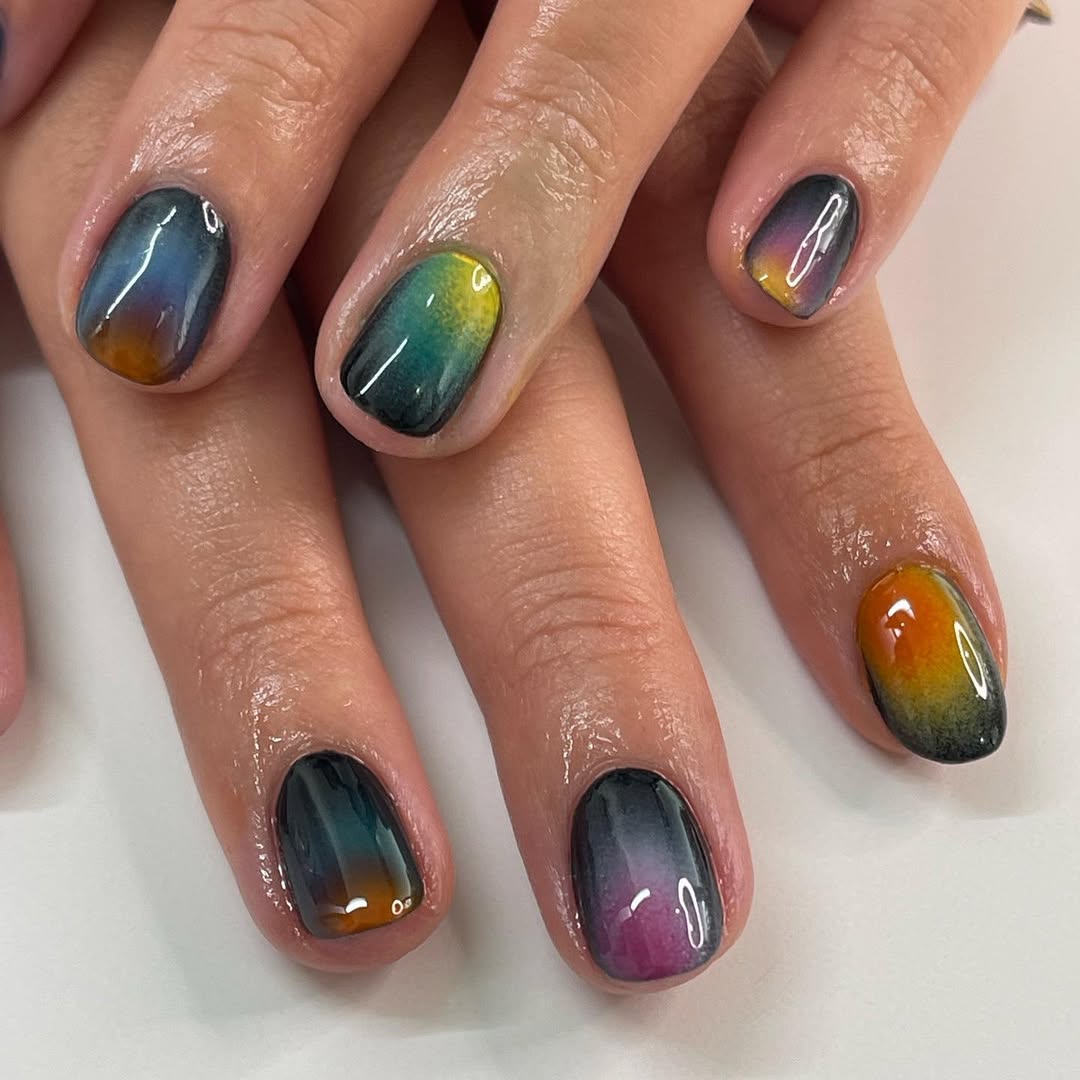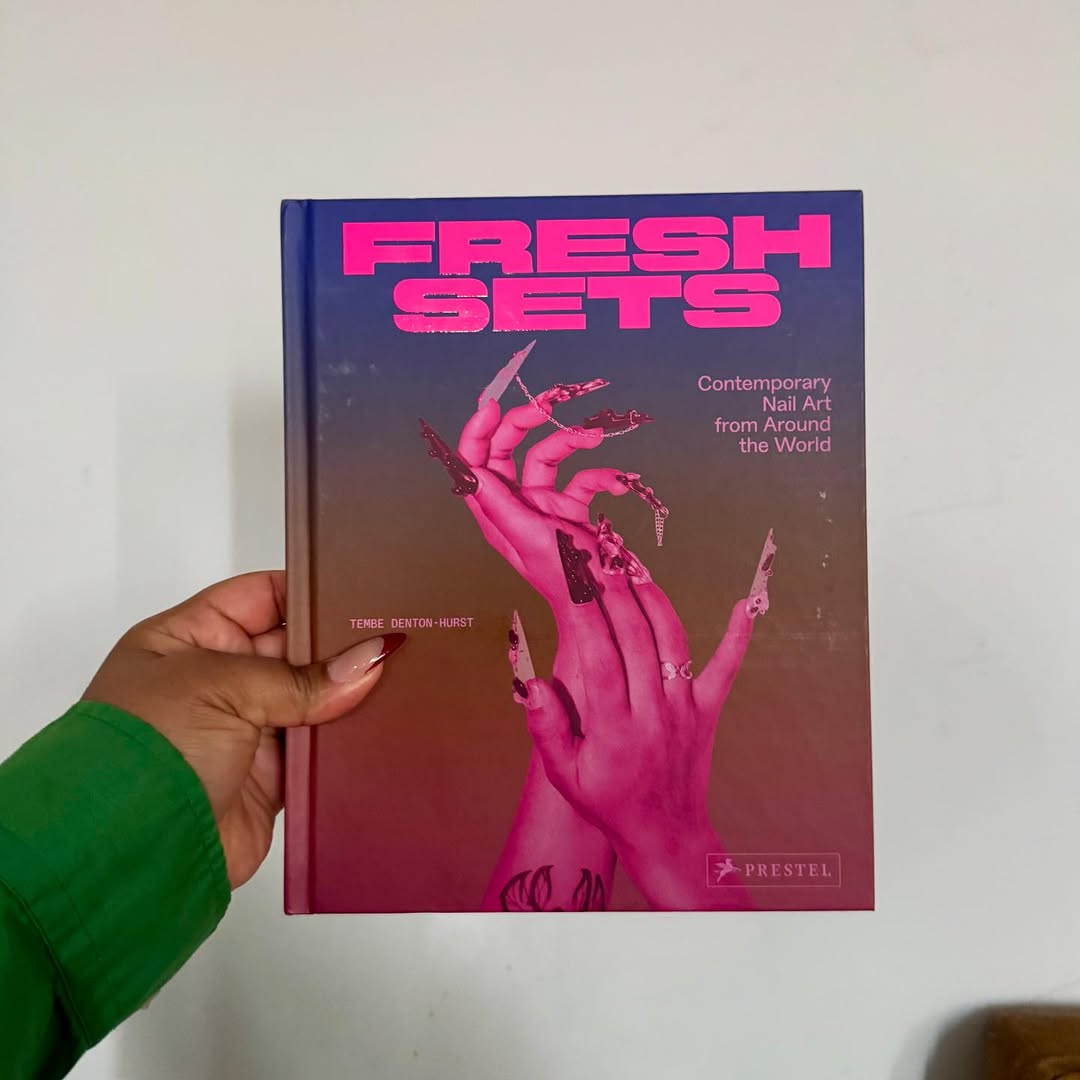
Where do you find inspiration for your next manicure? When I got a copy of Fresh Sets by Brooklyn-based beauty writer Tembe Denton-Hurst, I knew I’d hit the nail inspo jackpot. The book highlights 35 artists, from L.A to India, who are pushing boundaries with creations like moss-covered nails with 3D sculptures of mushrooms and dragonflies, and seven-inch rose-red stiletto nails.
What inspired the book was Tembe’s long-time love of acrylics: “When I left my first nail appointment and saw my long purple nails, I thought for the first time, ‘Oh, my hands are cute,'” she says. “They went from being strictly functional to something exciting. Now long nails have become part of me.”
But also? The realization of how nails are tied to identity. “Nail art is core to the way Black and brown women adorn themselves,” says Tembe. “Growing up, the most beautiful women had fly nails. Keeping your hair and nails done is a form of communication: that you’re put together and you care about the same things.”
Here, Tembe tells us about nail trends, a low-maintenance look, and five salon etiquette rules…
Nails by Hanin Ibrahim.
On popular nail trends:
“People are loving aura nails right now,” says Tembe. “Everyone’s nails are looking like a mood ring. I’m always asking the owner of my go-to salon what people are coming in for. She says clients are into charms and 3D elements. Almond pointed stilettos have been the way for a long time, but square nails are also coming back.”
Nails by Lesly Arrañaga.
On artists changing the game:
“I love Lesly Arrañaga’s work. She harnesses her Mexican heritage — for example, she did a series where she put nails on her relatives, including her dad. It was playful and nostalgic and distinctly rooted in her culture. She also created resin bubbles with portraits of her dog. Her designs always have a unique point of view, which I think is rare to find in art of all kinds, but especially in the nail space, where a style can become popular on Pinterest and then suddenly everybody’s replicating it. She’s also a very talented sculptor. She’ll build an entire spam musubi on a natural nail!”
Tembe’s French set by House of Nails by Natty.
On a low-maintenance look:
“I always do a multi-colored French tip. One, because I’m lazy — a French tip hides the grow out, so even if many weeks go by, they still look pretty decent. And two, I don’t like sitting for a long time at the salon to get intricate designs. But I do experiment with different colors on each nail.”
Nails by Leticia Casas.
Tembe’s salon etiquette:
1. Arrive on time for your appointment. “Even showing up five minutes late can shift a nail tech’s day back 10 minutes; then that 10 minutes catapults into 20 minutes, and so on. My nail tech is a mom, so whenever I show up late, I always realize, ‘Oh my god, she has to pick up her daughter from school.’ If you’re late, adjust your design to compensate for time.”
2. Don’t take calls on speaker. “I have been guilty of answering the phone, pressing the speaker icon, and then putting my hands underneath the UV light. But please, let’s all bring headphones. The salon is a public space, and people are there to relax.”
3. Arrive with a clear sense of what you want. “If you want something specific, go to your appointment with reference images and the colors you have in mind. This prevents you from eating up too much of your nail tech’s time and potentially costing them another client.”
4. Be friendly. “Always learn your nail tech’s name, of course. It’s important to connect with anyone you see often and recognize them as individuals who have a life beyond the scope of service.”
5. If you’re unhappy with your nails, speak up. “I know this makes people nervous, but I promise you, nail techs would prefer for you to say, ‘Hey, I don’t love the way this looks,’ so they can fix your nails in the moment, instead of you going home unhappy and returning to fix them the next day. It’s much easier to fix things right away, versus when your nails are fully cured.”
Thank you so much, Tembe! You can order Fresh Sets here, if you’d like. How are you doing your nails these days?
P.S. A nail polish that looks like a shell, and Tembe’s marriage proposal in a bookstore.





 108 COMMENTS
108 COMMENTS